If you are an undertaker in 1878 Kansas City, and you learn that your competitor’s wife works as a telephone switchboard operator and has been diverting business calls meant for you to her husband, you have three potential courses of action:
- Contact the telephone company and try to get the operator fired.
- Take the operator and her husband to civil court and try to sue for damages.
- Revolutionize the entire telephone system by inventing an automatic telephone switching system that allows people to dial each other directly, thereby eliminating any need for a telephone switchboard operator.
Almon Brown Strowger went with (3).

Strowger wasn’t the first to come up with the idea of an automatic telephone switching system, but his concept was the first that would work on more than a handful of phones within a system. He was awarded a patent in 1891.
Of course, Strowger didn’t know how to make the thing. He was an undertaker, after all. Strowger conscripted his nephew and some business partners to help develop a working prototype, which they tested out in the best of all possible places: La Porte, Indiana.
Courts had recently ruled that the independent telephone company that served La Porte was in violation of Bell Telephone patents. La Porte’s telephone infrastructure was dismantled, and suddenly, this reasonably large town had no operating telephone system. Strowger and his team swooped in. La Porte became the first place in the world to have automatic, operator-free telephone dialing.
Bell eventually acquired the technology in 1916 and the Strowger Switch, as it was called, became standard equipment throughout the 20th century.
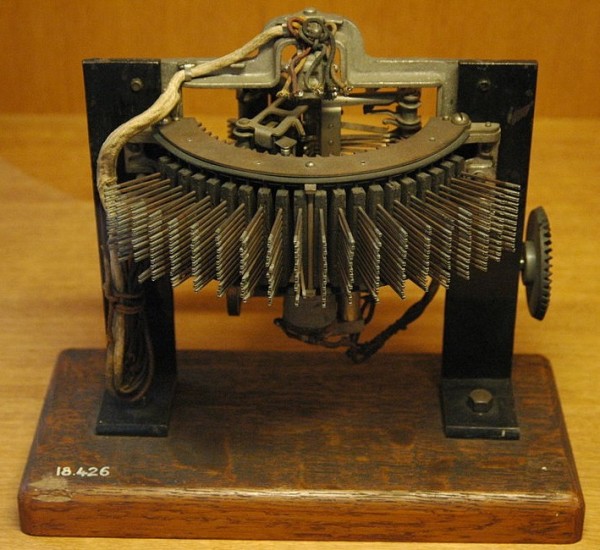
Strowger Switches today.
Meanwhile.
Last July, we told the story of the Purple Hotel. Here’s the original story, with an update at the end.
Visual spoiler:
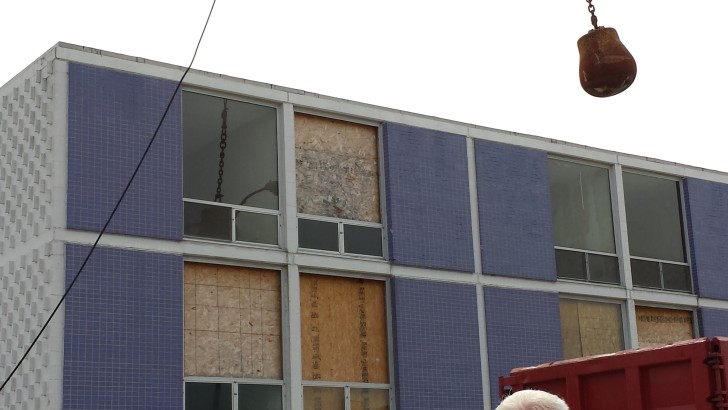
What’s the difference between what the public sees and what an architect sees when they look at a building?
The hotel on the very prominent corner of Touhy and Kilbourn Avenues in Lincolnwood, Illinois used to be the town’s most famous building: The first Hyatt hotel in all of Chicagoland, premiere accommodations, top-notch restaurant. It was swank! Roberta Flack stayed there. Barry Manilow stayed there. Perry Como. Michael Jordon stayed there on his first night in Chicago. Every thirteen-year-old in the area had their bar mitzvah there.
Then, slowly, over time, it became Lincolnwood’s most infamous building. Changed hands, got seedy and run down. It was the home of the Midwest Fetish Fair and Marketplace convention. There were drug-fueled sex parties attended by shady Chicago politicians later convicted of things like extortion. And of course there was the convicted mobster Alan Dorfman, who was gunned down in the parking lot. It’s now dilapidated and empty.
But even if you know nothing about the history, everyone in the area knows this hotel.
Because it’s purple. Really, really purple.
Gwen Macsai grew up nearby and she always thought it was really, really ugly. Lots of people did. To be fair, lots of people didn’t. But everyone has an opinion about it.
But Gwen Macsai, host of Re:sound from the Third Coast International Audio Festival, has a secret about the Purple Hotel.
Gwen talks to the original architect of the Purple Hotel, plus WBEZ architecture critic Lee Bey, developer Jack Weiss, and the new architect, Jackie Koo, who’s looking to bring the Purple Hotel back to its former glory.
Photos of the hotel in its glory days:


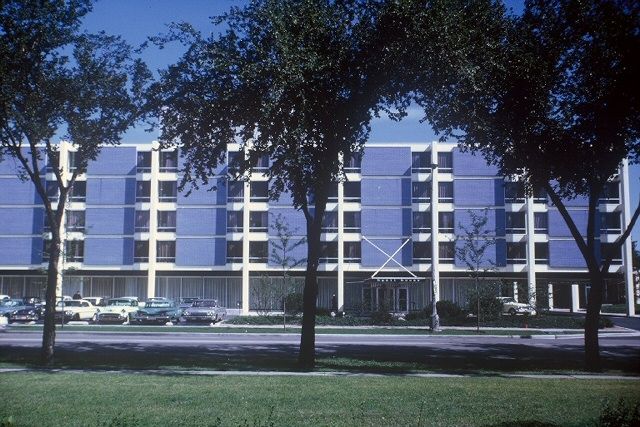

Photos of the hotel during its less glorious days in 2011:

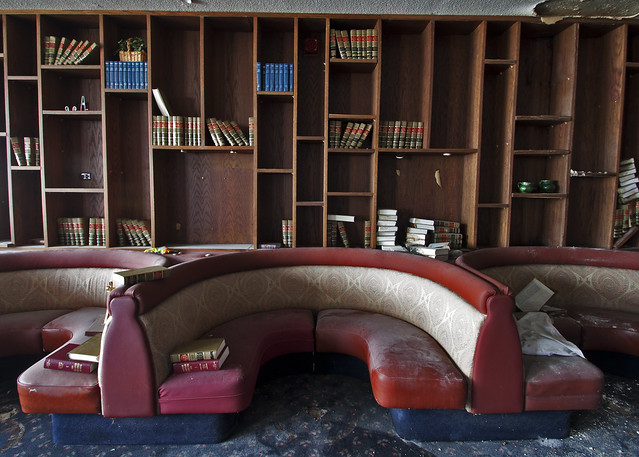
It turns out that it would cost $40 million to renovate the hotel. So on August 27, 2013, the parking lot of the Purple Hotel was filled with local dignitaries from Lincolnwood, Illinois. Even the mayor was there. The wrecking ball had, at long last, come for the Purple Hotel. And the people were celebrating.
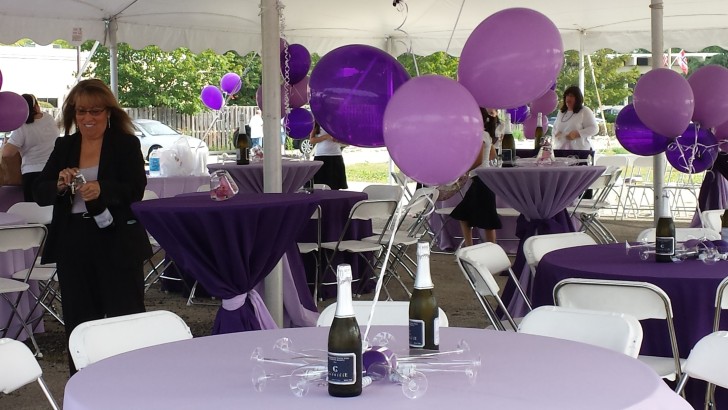
Architect John Macsai was the man of the hour.
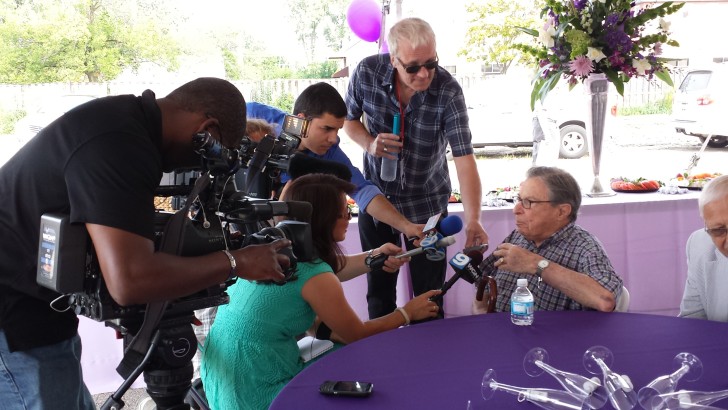
John was even given a purple plaque.
I really, really hope Gwen will save me a brick from the demolition site.
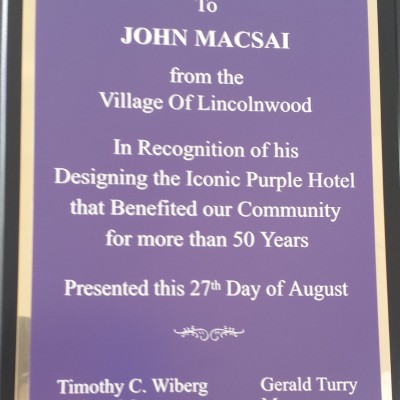



Comments (5)
Share
Thank you for this podcast and excellent notes, especially the video. When listening to the podcast, what came to me was the din of a central office room filled with Strowger switches all operating at once. It didn’t matter where in the world one might be, the exchange offices sounded quite similar. And the switches were amazingly reliable. If you got a wrong number, just as today, you almost certainly dialed it in error.
At home, when I used to dial a number (probably few people under 40 can relate to this), I knew what was going on a few blocks away, at the local central office. As your finger released the dial and it returned to its starting position, someplace, somewhere, those switches were operating for you. And amazingly, just like in the movies, you could also pound the switch hook and yell “Operator! Operator!” and actually get one on the line.
I love this story — and it came at the precise moment when I needed to hear it! The best revenge is success! Thank you for your wonderful podcast! I have enjoyed every episode!
PBX engineer here; I worked on Strowger machines a couple of times early in my career. There’s a real sense of beauty to these things, visual and especially auditory, and the latter is even audible to subscribers as they make calls.
When you pick up the receiver, if you listen quickly and closely, a faint whirr as the linefinder hunts to your terminal and connects you to a dial tone, which is usually a deep mechanical buzz produced by the motor-generator/interrupter set in the exchange.
After you dial each digit, another whirr and a click. If you hear a tiny burst of dialtone after the first couple of digits, you’ve just gone through digit-absorbing selectors. If only a whirr/click, that’s the first selector in the switch-train, and then again at the second selector. Finally at the connector switch, no whirr after the next-to-last digit, and the last digit connects you to the called line where the ringing machine cuts in and you hear the brrr-brrr tone as the other end is ringing.
If you were standing in the central office or PBX room, you’d hear a series of sharp clicks and a whirrrr of the two-motion relays as each digit was dialed. A room full of these things during heavy calling hours was a symphony of rhythms.
These machines were even immune to the electromagnetic pulse of nearby nuclear weapons detonations, an important consideration during the Cold War. They required skilled engineers and technicians to build and maintain. They seldom broke down, and unlike VOIP, they were immune to viruses and DOS attacks. They were also immune to mass surveillance: any wiretap required the cooperation of the exchange engineer and was executed for only the line specified in the warrant.
But it’s to L.M. Ericsson and his associates, that goes the credit for the switch that replaced the Strowger: that would be the Crossbar exchange, with higher capacity for handling calls during peak calling hours. The Crossbar system served mostly urban areas in the USA while Strowger continued to serve rural areas (though in the UK, Strowger reigned supreme in London and other cities as well as the countryside). The Crossbar system, both local and long distance, is what built the globally-interconnected network. Together, the global telephone network of Crossbar systems and Strowger systems formed the biggest machine humanity had ever built, and one of the most perfect machines ever built by the hands of humans.
If you lived in those times, your telephone service worked flawlessly, the audio was crisp and clear, and you could talk all day or all night without interruptions.
So much of that we’ve lost today as the cellphone, with its 1934 audio (I can prove that with a live demo) and unreliable connections, has become just another feed for mass media consumption and surveillance, with “conversation” relegated to an afterthought and a 6K slice of bandwidth.
Meanwhile, tonight I’ve got to build & program a digital PBX and voicemail system. Admittedly that task is far easier today than any comparable task in the Strowger era (voicemail didn’t even exist, and a PBX for 200 lines filled up a large room rather than a box I can carry in both hands). But I still have an old uniselector-based switch on my workbench, and it still works like new.
I still use rotary dial phones on my home PBX and landlines. And you can too (search “dial phone” on Ebay). A long conversation with a close friend, landline-to-landline with rotary dial phones at both ends, will really open your eyes, and your ears. For anyone who has decided that they “don’t like talking on the phone,” you’ll discover that talking on the phone is good after all, when you can both hear each other clearly and don’t get interrupted or cut off.
Sometimes the newest thing isn’t the best thing after all. And sometimes we still have a chance to keep what works, rather than letting it get dismantled (like urban rail systems in the 50s) and then regretting the loss.
Yes my grandmother has a rotary dial phone which my sister and I would talk on while spending summers with her when we were younter and it had amazingly clear, HD sound!!
Years ago now, our dial-phone stopped working. We couldn’t work out why, it was fine, or seemed fine, but would not communicate, so we got out the three other dial phones and yes, no matter what we plugged in, dial phones would not work. We got a button phone, plugged it in to the same plug, and it worked. End of an era, we were told that dial phone technology was no longer supported. We still mourn the use of our dial phone.
We are still on copper wire, but no doubt that will change sometime too.